Paper Doll
NAPO 2015: PhD in Productivity at the College of Organizing Knowledge
You really have to have passion for your profession to be willing to spend the better part of a week, not only away from home, but many time zones away, packed into conference rooms from morning until night, in order to learn more about the techniques, strategies and products that will help you help your clients and strengthen your business. Such is the reason professional organizers traveled from across the country and around the globe for the 2015 National Association of Professional Organizers Annual Conference and Organizing Expo.
My conference experience started early with the the Board of Certification for Professional Organizer’s (BCPO®) annual, all-day, in-person Board of Directors meeting. Pictured below, from left to right: Secretary Christina Gomes, Director of Professional Practices Vanessa Hayes, Assistant Executive Director Celisse Collier, Direct of Program Development Julie Bestry (that’s Paper Doll!), President Helene Segura, NAPO Board Liaison Danielle Liu, NAPO Executive Director Sue Pine, and Director at Large in charge of all things educational, Margaret Lukens.
Missing from the photo (but not the meeting): Director at Large, Regina Lark. Also missing are BCPO® Treasurer Tracie Utter, Director of Communications Bonnie Dewkett, Public Director Sharon Fanning, and Karen Koedding, our American-in-Australia International Director at Large.
How important is this work? I gave up a day touring Warner Bros. Studios with my NAPO-Georgia colleagues to attend this board meeting and missed seeing members of the cast of The Big Bang Theory. (Look above. Look below. Which group do you think is more fun? Bazinga!)
The important work of the BCPO® and its certificants includes recognizing and raising industry standards, practices and ethics through an evolving program of strict eligibility requirements and a legally defensible examination designed by subject matter experts.
EDUCATIONAL OPTIONS
Attending an annual NAPO conference is like working on a double graduate degree in the art and science of being a professional organizer. Attendees get to pick from among multiple concurrent educational sessions in each of six session blocks over three days of conference. And that doesn’t even include the variety of interactive, intensive half-day and full-day pre-conference sessions.
My colleagues and I attended courses in five educational tracks, including these offerings:
Organizing and Productivity
- Virtual Organizing
- Stuff Matters: The Language of Clutter
- Demystifying Health Insurance Claims and EOBs
- Utilizing Lean Principles in Home and Office Environments
- Organized Mind, Organized Life: Brain Hacks for Productivity
Specific Needs Clients
- The Chronic-ness of Chronic Disorganization
- Relocations: Near, Far, and Far, Far Away
- The Many Faces of Hoarding and Trauma
- What’s ADHD Got To Do With It? Getting and Keeping Your Clients in Action
- Compulsive Buying: What Every Organizer Needs to Know
- Experience Talks: Senior Move Manager Q&A
Technology and Social Media
- Organizing Electronic Documents & Records in Cloud-Based Systems
- Tackle Your Clients’ Digital Photo Collections
- Using Technology to Increase Productivity and Profitability
- Boost Your Brand & Business With Video Marketing
- Turning Likes Into Leads: Getting More Strategic with Your Social Marketing
Business Growth and Marketing
- Media Magnet: How to Get Great PR
- The WOW Factor: Creating Brand Ambassadors for Your Business
- Building a Winning Team: Hiring and Training Employees
- Changing Gears (A special Golden circle-only course for veteran organizers)
- Rock Your Content
- REDESIGN: Adding V.A.L.U.E. to Your Organizing Business
Running Your Business
- Think Like a Negotiator
- The Art of Pain-Free Profitability
- Show Me The Money: Money Mindset & Pricing Strategies
- Eight Secrets to Entrepreneurial Success
- The POWER To Say NO So You Can Say YES To What Matters!
INSIGHTS AND HIGHLIGHTS
The depth and breadth of information presented could fill blog posts for the next month, and each attendee took away his or her own amazing insights and epiphanies. It would be impossible to identify a single session as my favorite, but I did leave conference with concepts and strategies that really resonated with me.
Just the learning objectives of Regina Lark’s amazing session, The Chronic-ness of Chronic Disorganization, alone, give a clear sense of the complexity of material presented. Regina set out (and accomplished) making sure attendees could:
- Identify when disorganization becomes chronic disorganization
- Identify differences between collecting and accumulating, cluttering and hoarding
- Recognize the range of factors associated with chronic disorganization
- Understand the critical role of the Executive Functions
- Develop strategies for working in households with both CD and non-CD family members
We left with a clearer understanding of the pervasive nature of chronic disorganization, talked about how to identify clients’ processing modalities (visual, auditory, kinesthetic, tactile, verbal, intuitive, etc.) and learned concrete language to use in creating effective conversations to help chronically disorganized clients. A simple inquiry, like, “Who are you without these [books, outfits, etc.]?” provides the opportunity to help clients differentiate tangible items from self-image, making it easier to let go of excess.
As is often the case, attendees offered their own insights. One professional organizer shared her chronically disorganized client’s concerns about decluttering, noting she’d said, “To make a decision to is to grieve the loss of all possibilities.” For professional organizers to work effectively with their clients, understanding these fears is vital.
Colleagues Kim Oser and Deb Lee’s sold-out, jam-packed session, Using Technology to Increase Productivity and Profitability, served as the equivalent of reading dozens of books and hundreds of blog posts on the state of software, apps and tools for keeping up with the demands of the modern world. What was covered? Oh, only a few little (ha!) things like:
- Staying Focused
- Task Management
- Calendar Management
- Email Tools and Management
- Project Management
- File Storage
- Password Management
- Shopping & Meal Planning
- Finance and Accounting
- Scanning
- Marketing (Email, Video and Social Media)
- Customer Relationship Management
- Automation Tools
Whew. Paper Doll‘s fingers are tired from just typing the categories. We learned about Asana, Basecamp, Constant Contact, Dropbox, Evernote, Freshbooks, Gmail with Boomerang, Hootsuite, Insightly, Jing…and all the way to Zapier, and well beyond a standard alphabet. Kim and Deb covered the merits and demerits of 68 separate productivity tools in one 90-minute session! I can’t wait to figure out the best ways to use IFTTT and Screencast-O-Matic!
Want a sense of all they taught? Deb and Kim wrote a book! Check out their 50 Ways To Use Technology To Increase Productivity and Profitability, with 30+ bonus tools! (Math? Who needs math?!)
Certainly the most inspiring session I attended was with ADHD Coach Alan Brown (AKA: ADD Crusher), Organized Mind, Organized Life: Brain Hacks for Productivity. My notes for this session are filled with asterisks, bolding, colored highlighting and giant exclamation points. With humor, compassion, striking visuals and the reinforcement of cognitive science, Brown’s own experiences with ADHD resonated with so many of us, not only because of what we see in our clients, but how the ridiculous pace and demands of modern life have impacted our own personal and professional lives.
©ADDCrusher 2010-2014
(I was so transfixed by Alan’s presentation, I didn’t even think to snap a photo.)
Just a very few of the takeaways from Alan’s session (because I don’t want to steal his thunder) included:
- 60 seconds is an eternity if you’re in the right state of mind. By reframing our approach to a moment, to 15 minutes, to a free hour, we can take advantage of previously unnoticed opportunities.
- “Should” is the mark of the grumpy, personified by the thought, “Life should be how I want it to be. When it differs, life is wrong, I am right, and I am personally offended!” Oh, isn’t that the truth?!
- Do what you’re doing now. This piece of wisdom has already worked wonders when I’ve explained it to my clients with ADHD. The idea is that there are three types of activities: what you’re doing NOW (i.e., what you’ve decided is your priority on which you should focus), BS that’s not what you’re doing now (Alan’s term, not Paper Doll‘s, to cover all the unimportant, shiny distractions), and important stuff that’s NOT what you’re doing now. Deceptively simple, checking in on what you’re doing and making sure that the latter category gets scheduled but does not rip your attention from WHAT YOU’RE DOING NOW is a true key to productivity.
Finally, a huge bonus of Alan’s talk was on the subject of Power Poses and the research behind using body positioning to manipulate body chemistry and increase self-confidence. Sound familiar but you weren’t at conference? You might have seen Dr. Amelia Shepherd on Grey’s Anatomy stand in superhero pose (think Superman or Wonder Woman, hands on hips) before performing brain surgery, or perhaps you’ve watched Amy Cuddy’s fascinating TED Talk on the subject.
This is only a peek behind the curtain into the educational opportunities we professional organizers had at this year’s conference. There was also an Ask the Organizer panel, with experienced business organizers holding forth on the Best Practices for Organizing Your Own Business and a closing keynote from author and speaker Laura Stack on How To Really Make it Big In Business.
As you can see, the annual NAPO conference is about learning much more than how to put stuff in boxes, label the boxes and store them away. In fact, the entire conference was kicked off by The Minimalists, funny, charming bloggers Joshua Fields Millburn and Ryan Nicodemus, on the concept of minimalism — having less (of the tangible stuff) so you can have more of the intangibles that make life worth living.
Certainly NAPO members are no stranger to the concepts Millburn and Nicodemus espouse. Some of our members have been practicing them since before the Minimalists were born! But it’s always good to revisit such important messages as:
- Our memories are not in our things. Our memories are inside us. Photos can help preserve our memories without preserving the excess of clutter.
- By letting go of things that don’t provide value to our lives, we can add value to other people’s lives – via gifts to friends, donations, and selling items to apply the money toward efforts that achieve a greater good.
-
Just. In. Case. are the three most dangerous words in the English language (if that’s your reason for holding onto things you don’t really need, want or love).
And finally, my favorite quote, about the drive to use tangible objects as pacifiers to sooth dissatisfaction with our lives:
For a more detailed review of Josh and Ryan’s keynote, read my colleague Donna Smallin Kuper’s excellent article in her most recent newsletter, Organizing Plain & Simple Monthly and to get more of a sense of their philosophy, watch their TED Talk.
Next time, we’ll begin our annual recap of the best and brightest of the organizing and productivity products and services displayed at the EXPO.
NAPO 2015: Conference By the (Organizing) Books
Longtime readers of the Paper Doll blog know that the majority of the time, I’m writing about paper and information flow, and how to keep it all managed, but there’s one time each year where we go beyond to explore all sorts of organizing knowledge and innovations. Every year, just after the National Association of Professional Organizers’ Annual Conference and Organizing Expo, we spend weeks talking about the education and the products that can help organizers and clients (and you!) get and stay better organized and productive.
This year, I’m starting the series with something new about the NAPO conference experience. NAPO members have access to a variety of Special Interest Groups (SIGs), sub-groups that help NAPO members focus on their areas of concentration. SIG offerings support those who work with students and seniors, who specialize in relocations or small businesses, who speak and coach, who deal with technology and protect the environment, and more. Paper Doll is a member of the Authorship and Publishing SIG (led by my colleagues Debbie Lillard and Deb Cabral).
This year, as part of the NAPO EXPO, the Authorship and Publishing SIG ran a bookstore booth, carrying some of the industry’s best-loved books, authored by our own SIG members. This included newly released titles, classic organizing books, and recorded media and information products created by our members, whose number includes true celebrities of the organizing world, including Judith Kolberg and Barbara Hemphill. We even had a day and a half of fancy-schmancy book signings!
All of this was put together by organizing profession ROCK STAR authors Donna Smallin Kuper and Ramona Creel, who quickly, efficiently, and creatively constructed an outlet for organizing authors to spread the gospel (if you will) of organizing and productivity.
(That’s iconoclastic, straight-shooting Ramona at the left, Paper Doll in the center, and prolific writer and speaker Donna on the right. Trivia note: both Ramona and Donna are full-time RV-ers. Apparently genius preserves well in tin cans!)
If you’re reading this but were unable to attend NAPO 2015 and feel like you missed out, never fear — Paper Doll has you covered! I’ve listed each of the books and resources from our booth here, with links so you can check them out in depth, and perhaps make them part of your own personal library. Where possible, I’ve linked to Amazon paperback copies (because, well, I am your Paper Doll); you should be able to easily navigate to Kindle versions. (Please note that these are affiliate links and I will receive brownie points in the form of green pieces of paper if you purchase after clicking through this links.)
Home/Life Organizing Books
A Mom’s Guide to Home Organization by Debbie Lillard
DeClutter Your Life NOW! A Motivational Guide to Tackle All Aspects of Clutter in Your Life by Deborah Cabral
Make Room for Clarity by Rick Woods
How to Declutter and Make Money Now (2nd Ed, 2015) by Donna Smallin Kuper
50 Shades of Organizing…Your Life by Susan Unger and Lauri Mennel
Organize This! Practical Tips, Green Ideas, and Ruminations about your CRAP: Clutter That Robs Anyone of Pleasure by Vali Heist
Now What? A Simple Organizing Guide by Diane Quintana
(On the left is TV superstar Geralin Thomas; on the right is my longtime NAPO-Georgia friend and colleague and chronic disorganization specialist, Diane Quintana. They’re flanking the lovely and talented Valentina Sgro, author of the Patience Oaktree novels. Val wasn’t displaying her books, but she came out to support those of us who were!
Organizing Paper at Home: What to Toss and How to Find the Rest by Barbara Hemphill
The A-To-Z of Getting Organized: A Grown-Up Picture Book for the Chaotic and Cluttered by Ramona Creel
Life Cycle Organizing Books
Don’t Toss My Memories in the Trash – A Step-by-Step Guide to Helping Seniors Downsize, Organize and Move by Vickie Dellaquila
The Organized Bride’s Thank You Note Handbook: Let Systems and 101 Modern Sample Thank You Notes Take You from Overwhelmed to Organized by Stacey Agin Murray
Business Organizing Books
57 Secrets for Organizing Your Small Business by Julie Bestry (Hey, that’s Paper Doll!)
Don’t Agonize: Organize Your Office Now by Diane Hatcher
(The indefatigable Diane Hatcher has been keeping South Floridians on their toes since 1998!)
Professional Organizing Business Books and Resources
Before the Big O: Professional Organizers Talk about Life before Organizing by Regina Lark
Custom-Branded Clutter Flow Charts by Hazel Thornton
The Professional Organizer’s Bible: A Slightly Irreverent and Completely Unorthodox Guide for Turning Clutter into a Career by Ramona Creel
Student Organizing Books
What’s the Deal with Teens and Time Management by Leslie Josel
The Academic Planner: A Tool for Time Management by Leslie Josel
(The clever Leslie Josel is a fellow alumna of Cornell University. It’s obligatory that I note: GO BIG RED!)
Psychology Books
Psychic Debris, Crowded Closets: The Relationship Between the Stuff in Your Head and What’s Under Your Bed (2nd Ed., 2014) by Regina Lark
Chronic Disorganization and Hoarding Books
ADD-Friendly Ways to Organize Your Life by Judith Kolberg
Getting Organized in the Era of Endless by Judith Kolberg
Get Rid of Your Stuff Flash Cards by Judith Kolberg
From Hoarding to Hope by Geralin Thomas
Fresh Start: Overcoming Chronic Disorganization Group Manual by Karen Kruzan and Barbara Jo Dennison
Rise Above Your Stuff by Karen Kruzan and Barbara Jo Dennison (This title is new; check back often for an updated link.)
Inspirational Books
Less Clutter, More Life by Barbara Hemphill
Clear the Clutter, Find Happiness by Donna Smallin Kuper
For the Gifts We All Come Bearing by Jane Campbell
Time Management Resources
The Streamlined Time Solution by Miriam Ortiz y Pino
Until 2016…
I believe that the resurgence of a NAPO authors’ booth (we had one a decade ago, but it fell by the wayside) under the auspices of the Authorship and Publishing SIG is good for everyone. Professional organizers will be inspired by their colleagues to share their advice, which will, in turn, give the public more of an opportunity to see a wider variety organizing and productivity concepts and strategies presented by new voices and in different styles.
I’m inclined to believe that the authors of the above books — experts all, on productivity and organization — help bring that belief closer to reality.
Tax-Time Freebies To Keep You Organized
Have you already finished your taxes? Just starting them? Are you inching your way towards finishing them, and looking around you to find that you have a mountain of papers ready to shred?
March and April, collectively considered “tax time,” is the perfect opportunity to clear out your file folders, your desk drawers, your purses and wallets and pockets, and shred all the receipts and documents you don’t need to support your taxes.
Of course, if you’re not sure what you need to keep and what you’re able to toss or shred, Paper Doll has you covered with a detailed records retention schedule, Do I Really Have To Keep This Piece of Paper? Once you know what needs to be shredded, start gathering up the piles.
Three-inch stacks of cable bills dating back to your first apartment? Ciao!
That mountain of receipts from the coffee truck outside your building? Gone!
Frequent flyer loyalty mile statements from airlines that long ago merged with the big guys to become a super-mega airline? Buh-bye!
Dating back to the classic Paper Doll post, Shredding the Documents: Find Your Shredding Solution, we’ve talked about how essential it is to shred items that you no longer need for tax, legal or proof-of-ownership purposes, because merely tossing them in the trash could put you at risk for identity theft.
If you’ve got a great shredder, then shred away, one small pile at a time (because unless you’ve got an industrial-strength shredder, more than a short stack at a time will cause your residential shredder to overheat).
However, if the to-shred stack is as tall as your favorite little tax deduction — I mean third-grader — then you need to upgrade your shred game. And you have a few options!
PRESS THE EASY BUTTON
You know all about the Staples Easy Button, right? What could be easier than handing off your piles of unneeded, unwanted papers and having them magically destroyed…for free?
Head over to this Staples’ link to a coupon to shred up to 5 pounds of paper for FREE! Since it’s for shredding, the coupon is obviously valid in-store only. So, go to the link, print the coupon, bring it to your favorite Staples store along with your massive pile of excess papers to shred. Once the shred center folks at Staples take everything off your hands, present the coupon at checkout.
Of course, there’s some small print: Offer valid through 5/2/15 in-store only. Discount applies to shredding services of up to five pounds. Limit one per customer, nontransferable. May not be combined with any other coupon. No cash/credit back. Not valid on prior purchases.
HEAD DOWN TO THE DEPOT TO GET SAVINGS TO THE MAX
OK, corny, I know, but now that Office Max and Office Depot are one big happy family, you know that they’re not going to forget your need for shredding those monster piles.
Head over to the Office Depot/Office Max Tax Page and scroll to the bottom. Click on the link that looks like this:
and it’ll yield an actual coupon you can print (or bring in on your phone, tablet or other mobile device). Note: this coupon is for shredding up to two pounds of paper, and for a narrower time frame, from now through 4/25/15.
This photo is just a facsimile. (Check the actual coupon for the official small print.) So, click on the above link, print it out (or securely save it to your device in Dropbox or Evernote or whatever), gather up your shredding and get that pile of paper clutter out of your office or off your dining room table.
Declutter, protect your identity, and save money? Paper Doll thinks tax day just got a little less taxing!
Paper Doll Gets Hooked on GeckoTech and Meets a Spy: A Shoplet Review
Periodically Paper Doll reviews new and established office supplies and accessories through the Shoplet Product Review Program.
A few years ago, I wrote the post If It Quacks Like a Duck Then It Might Be a Zebra, a Shoplet review of wackily-patterned Duck®-brand tape. Today, we’re looking at a different kind of quacker, a gecko that thinks it’s a duck.
HOOKING UP THE USUAL SUSPECTS
We professional organizers like to recommend vertical storage because it makes efficient use of otherwise underutilized empty wall/door/cabinet space. For example, we’ve previously talked about vertical file storage options that let you make use of walls in office, cubicles and even hotels. But sometimes you don’t need a big, fancy organizing tool. Sometimes, to hang a backpack or a coat, car keys or a flash drive, a nice hook will do.
When we talk about hanging things on hooks, we usually consider four solutions: nails, suction cups, adhesive-backed hooks, and 3M’s Command®-brand. Each has advantages and drawbacks:
- Nails are inexpensive — you can get a pound of them for about $3. But you also have to have a stud-finder to make sure you aren’t hammering that nail into a random piece of sheet rock, and a nail is a rather permanent solution to what might be a temporary need, especially if you’re a renter (or you redo your décor with any frequency).
- Suction cups with hooks on them seem like a great idea at first. We use them to hang squeegees and soaps-on-ropes in the shower and rainbow-glass knickknacks on our windows. But we don’t use them for heavy-duty stuff because experience tells us that the minute a suction cup gets lint-y or dusty, it pops off the window or wall.
- Plastic hooks with adhesive backing are fairly easy to place — they come with the spongy adhesive tab already affixed to the hook, and you just have to figure out where to plant it, and then remove the backing from the other side and stick it! But woe onto you if you put too much weight on a plastic hook or ever want to remove it. Chances are good that your paint job will be ruined or the spongy-sticky adhesive residue will stay behind. Good luck getting your security deposit back!
- Command®-brand hooks are great! They’re relatively easy to put in place, and are easily removed without damage to whatever surface you select. And let’s face it, they’ll hold anything, for just about forever. It’s usually my go-to option. However, although the hooks themselves are reusable, after you use up the original and spare adhesive tabs, you have to buy more.
Hence, today’s products for review. I received two: one three-pound and one five-pound capacity new breed of Reusable Hook.
THE BASICS
GeckoTech Reusable Hooks are different. No nails. No gummy adhesive. No complicated directions. And while yes, they use suction, this is not your bathtub squeegee/rainbow prism-holding suction cup.
The GeckoTech Reusable Hooks come in four weight-bearing capacities and in five packaging varieties:
- Four hooks per package, each with up to 1/2-pound (.22 kg) capacity
- Two hooks per package, each with up to one pound (.45 kg) capacity
- One hook per package, each with up to three pounds (1.3 kg) capacity
- Two hooks per packages, each with up to 3 pounds (1.3 kg) capacity
- One hook, each with up to five pounds (2.3 kg) capacity
Each hook has a large, flat, smooth, transparent surface backing from which the small, plastic hook protrudes. The backing is flexible, and while the front feels smooth, the reverse, the part that is flush with the wall or other vertical surface, is covered with itty-bitty, teeny-weeny micro-suction, invisible thingies and feels kind of gummy, though it leaves no residue.
It’s also waterproof!
GeckoTech Reusable Hooks adhere to painted surfaces that can resist stains and are easy to clean — so, not textured or matte-finish surfaces. But it also works on plasterboard, glass, laminate, stainless steel and other smooth, hard, non-porous surfaces. They don’t recommend using it on wallpaper or textured surfaces — like the bumpy, stucko-like walls of Paper Doll HQ. (You should also avoid surfaces that are “dirty, uneven, peeling or coarse.” No surprises there, eh?)
GeckoTech Reusable Hooks run between $3.42 and $4.50 per package.
HOW GECKOTECH “INSTALLS”
Using the GeckoTech Reusable Hooks is pretty easy, even for the all-thumbs brigade at Paper Doll HQ:
- Clean the vertical surface with rubbing alcohol and allow to dry.
- Affix the GeckoTech to the vertical surface and use your fingers to push out any air bubbles. Wait an hour.
- Hang your stuff.
The packaging also advises to apply hooks when the surface temperature is between 40°F and 100°F, so no trying this in Buffalo garages when you’re bored at home on a snow day, OK?
GeckoTech claims to be “over-engineered” to hold more than the weight capacity listed for any given size, so the weight on the label seems like a safe limit to which you should adhere.
It’s right in the name — the product is removable. So, put it too high, or too low, or decide three months later that you’re packing up and moving to Miami to get away from harsh winters, and you can remove it with no muss, no fuss, and no damage. And then you can put it up somewhere else!
HOW GECKOTECH “UN-INSTALLS”
Peel off corner of the backing and lift it from the wall. That’s all!
OK, that’s not entirely all. If the GeckoTech hook has been up for more than 30 days, the packaging advises blowing a hair dryer at the hook to warm it for a moment before removing. That really is all.
HOW GECKOTECH “RE-INSTALLS”
Wash the hook with warm, soapy water. Let it air dry. Reuse.
GECKOTECH VS. THE OTHER GUYS
So how do the GeckoTech Reusable Hooks stack up against the other methods we’ve considered?
From the other reviews I’ve seen, as well as the promises on the packaging, the micro-suction that the backing doohickey creates means there’s no damage to the surface left behind, and no residue. So, that knocks nails and those plastic, sticky-backed hooks out of contention.
The promised weight-bearing seems accurate, so unlike the rainbow-prism colored glass suction-cup hook on the glass balcony door at Casa Paper Doll (the one that pops off the glass about once a month), this gecko stays stuck.
I only tried hanging a few household items (below), but from the looks of it on Pinterest, the GeckoTech Reusable Hooks work for corralling everything from pot lids on the inside of kitchen cabinets to holiday decorations on the mantel to the inside of a school or gym locker.
I’d say GeckoTech is pretty on-par with my beloved Command®-brand hooks for sticktoitiveness, and because GeckoTech is waterproof and lays flat against the vertical surface, it has a few added advantages — you can use these hooks in the shower without worry about soap-scum build-up.
THE VERDICT
I really did enjoy my chance to try out the GeckoTech. I liked that it was smooth and flat against any vertical surface. There’s no way for dust or schmutz to get in behind the hook, so you don’t have to worry about aerosolized oil in the kitchen (not that Paper Doll cooks) or stray yuckiness. You can remove, clean and re-apply these hooks at any time.
I also liked that because they are transparent, you don’t have to worry about color clashes in upscale rooms. Are these hooks gorgeous? No, but except for comparing them with the fanciest of Command®-brand hooks (like the brushed nickel types), this gecko is unobtrusive.
But there were some shortcomings. The maximum weight the strongest of these babies can handle is only five pounds, and that’s just not enough for a full backpack, or a workout bag with two-pound weights, or most purses. (Paper Doll‘s purse, below, is 3 pounds, shown hanging from a five-pound GeckoTech hook.)
The GeckoTech worked fine holding a curling iron by its hanging loop, but although my fancy hair dryer is under two pounds, I didn’t quite feel confident to hang it from the three-pound hook, even for a test. (User flaw rather than product flaw, perhaps?)
GeckoTech is a win, in general, but I’d like to see even bigger ones with more weight-bearing capacity. I’m not sure at what point structural integrity would hamper this simple design, but I’d be eager to see the line expand.
007 HAS NOTHING ON HP260
The other item Shoplet provided for my review was Duck®-brand HP260 High Performance Packing Tape with a built-in dispenser. As I’ve already reviewed Duck®-brand packaging tape, I wasn’t sure what could be new. It’s still clear (“crystal clear,” the packaging reports) and yes, the 3.1mm wide tape is suitable for all of “your shipping and storage needs.” But it’s packing tape — there are only two kinds, good and lousy, and Duck® makes good tape. So what else?
I read on about the tape’s aggressive acrylic adhesive being superior for wide temperature application: “HP260 features a wide temperature range performance and is resistant to ultraviolet rays which eliminates yellowing and increases shelf life.“ I only had the tape here for a little over a week, and the temperature inside Paper Doll HQ is generally fixed between 68° and 72°. As I didn’t think to have a box shipped from Boston to Bali, I’ll have to take Shoplet and Duck® at their word. But there was one more thing.
HP260 is billed as WHISPER QUIET — and it is! Have you ever noticed how packaging tape is usually pretty squeaky? I don’t know what they’ve done to make this ninja-caliber silent, but it’s completely squeak-free. And you don’t have to take my word for it:
This spy-rated tape comes in 22.2-yard single rolls for $2.77 and multi-packs.
FINAL WORDS
GeckoTech Reusable Hooks and Duck®-brand HP260 High Performance Packaging Tape are available directly from Shoplet, which also carries business promotional products and maintains a (literally and figuratively) colorful blog about cool office supplies. In addition to selling office supplies in North America, Shoplet is a purveyor of office stationery in the UK.
Disclosure: I received these products for review purposes only, and was given no monetary compensation. The opinions, as always, are my own. (Who else would claim them?)
Paper Doll’s Geeky Organizing Love: 6 Tips To Declutter With Your Darling
When your Valentine presents you with a gift box, whether packaged in classic Tiffany Blue or wrapped in lopsided, awkwardly taped, Sunday comics pages, your heart warms. When love fills your heart, and a gift fills your outstretched hands, it’s the thought that counts. But other times, the people you love present you with clutter, like a pet presenting you with a deceased mouse or squirrel, and just the thought of it can add a wintry layer of permafrost around the warmest of hearts.
As a professional organizer, I often work with clients whose efforts are not helped — or worse, are sabotaged — by their spouses or significant others. Here are a sampling of tips to help you help your sweetheart join in the organizing process in your home without tears or tantrums.
1) PURGE THE JUDGMENT AND TOSS THE GUILT
The first key to achieving organization as a joint effort is to remember that disorganization isn’t a character flaw. It’s not a measure of your sweetie’s maturity, intellect or worth. By and large, unless we’re discussing matters of legal concerns, financial issues, or personal safety (where a disorganized kitchen turns into a case for Tyvek-suited folks from the Centers for Disease Control), organizing is rarely a matter of right vs. wrong, but one of effective vs. ineffective.
It’s just a mismatch between the skills and systems already in place and the ever-changing demands of the world, including your demands (ahem, expectations) of your loved one.
Making people feel guilty about their clutter doesn’t help — and indeed, it can hurt their self-esteem and the loving bonds you share. Instead, create a guilt-free environment in which both getting organized and being organized can be seen as beneficial, fun and easy.
2) CATEGORIZE THE PURPOSE: START SPEAKING THE SAME LANGUAGE
With Valentine’s Day approaching, this is a romantic week, but organizing is not a particularly romantic conversational topic. Moving forward depends on making sure you start from the same place. Perhaps you’re aware of The Five Love Languages? You may know that your love language is “acts of service” and suspect your spouse’s love language is “words of affirmation.” Meanwhile, your honeybunny doesn’t have a clue about that and feels like Captain Picard relaying the Epic of Gilgamesh while trying to learn the metaphors of Tamarian before it’s too late.
You’re going to have to get on the same page and tell your loved one that for the two of you to face the beast at Tanagra (a common foe) you’re going to have to become Darmok and Jalad at Tanagra (and work together).
Start by making sure you both understand what it means to be organized, and why it’s important to get organized. For example, visual appeal just isn’t a huge motivator for many individuals. If someone is not already actively concerned with how things look, feeling pushed to declutter merely to make the house “pretty” is often a deal-breaker.
Instead of aesthetics, focus on the major tangible, temporal and experiential benefits of getting organized. Discuss how some new skills and systems will help the family save money (which can be better spent on nifty items and meaningful experiences). Show your sweetheart how the clutter of too many things in various locations (rather than in unified, categorized, even *labeled* storage) means it’s hard to find things, and how, when things are difficult to find, we tend to buy duplicates and triplicates. Reflect upon how disorganization often means missing deadlines (for filing taxes, returning rented items, paying bills, etc.), thereby causing you to have to pay fines and fees, or pay higher prices when coupons or discounts have expired.
Explore how a few organizing tweaks may also save time. If cluttered possessions make it hard to find everything from a clean shirt to the camera charger to the invitation to a wedding you’re attending, it’s slowing you down, giving you, your spouse and the family less time to focus on doing the things you actually enjoy.
If disorganization is causing you anxiety, explain that to your loved one, without blame. If you can clarify that cluttered paperwork and passwords for handling your finances makes you feel uneasy about the future, that shared clarity gives you a starting point for discussion.
Let your beloved know that you don’t see the time spent organizing as the goal, per se, but as a way to get to the goal of having more personal and family fun time.
Show your spouse the way organization (at home, at work, and for special events and activities) can reduce stress and increase overall productivity.
3) IDENTIFY THE CHALLENGES SO YOU CAN MAKE IT EASY
Next, brainstorm together how you can make the process easier. Ask your spouse what makes participating in the current system difficult in the first place.
Does your sweetie leave a phone charger, wallet, keys, pocket change and clothing in little piles all over the kitchen, living room and bedroom? Does your darling feel like there’s no place or space designated just for him or her? Perhaps the solution is as simple as figuring out what spaces would be convenient for each (a valet hook inside the closet, a bowl and charging block on a table in the entry nook, above a drawer designated just for them) and declaring them official!
Are they putting things down instead of putting things away because they don’t want to be “made wrong” by storing something where they think you’ll say it doesn’t belong? Do they cringe at the prospect of feeling clueless or being corrected?
Find ways to be equal partners, instead. Make decisions together, and then label the spaces so everyone feels empowered to put things away.
Ask your beloved if there are current storage areas that aren’t convenient – places where items are housed that don’t feel logical, or aren’t easily accessed – and rethink the placement. Perhaps the labels for the family filing system aren’t as intuitive as you think, leading to paperwork procrastination?
Everything should have a home, and if the storage place is conveniently located and labeled, it makes it easier to put things away.
Paint an outline of the tools that go on the pegboard in the garage to make it simpler to return them. Work together to label family financial, legal and medical files, or label the edges of shelves in the linen closet so everyone knows where twin sheet sets should go.
If you or your sweetie is artistic, sketch a fun little map of where foods belong in the fridge or pantry and post it on the door.
Is “when?” more of a problem than “where?” Does your spouse or significant other just not remember to do the tasks because of “clutter blindness?” If visual triggers don’t work, what about a cell phone alarm at certain times of the day, with ring tones of songs that are funny or keyed to the task at hand?
Is time an obstacle? Build time into the family schedule (perhaps a nightly 15 minutes before dinner, or mid-morning on Saturdays) for everyone (kids and grownups who act like kids, alike), to tackle their organizing tasks and brainstorm solutions to frequent annoyances.
4) MAKE IT FUN TO MAKE IT STICK
Research shows that we all have a limited amount of willpower, so instead of expecting one another to create and stick to new habits because they’re for the common good, create incentives for sticking to the new game plan.
In The Princess Bride, Westley acquiesced with a quiet “As you wish,” to Buttercup.
Once he was unmasked as the Dread Pirate Roberts and they were reunited, Buttercup (and we) learned that he wasn’t being passive-aggressive; it was his way of saying he loved her. However, if your beloved thinks of organizing as a chore, and thus procrastinates on promised clutter-busting tasks, leading to resentment on both sides, find ways to make behavioral changes an adventure, a challenge or a competition.
Appeal to the big kid inside and document successes with points or rewards. Encourage trying to beat a personal best. Consider a Seinfeldian “Don’t break the chain” effort at momentum. Just like companies have “152 days without an accident,” to avoid safety violations, you could have a kitschy whiteboard in the house keeping track of how many days your household has gone without the kids being late for school, or you having to bug one another to unload the dishwasher or put away the [laundry, gadgets, X-Box, etc.].
Once systems are in place, schedule organizing maintenance time daily and play funny music with silly lyrics to set the tone. If you have kids, you may have to listen to Let It Go for the millionth time, but if it’s just you and your sweetheart, fifteen minutes of 80s TV theme songs or some Weird Al Yankovic should do the trick.
If there are household and organizing tasks your sweetheart just can’t stand, why not make a trade? Nobody says you always have to unload the dishwasher and your partner must balance the checkbook. Exchange the least-desirable tasks and you might both gain motivation in new areas.
5) ACCEPT DIFFERING STANDARDS
Sometimes, the organizing issues between sweethearts has less to do with overcoming obstacles and identifying incentives, and more to do with what’s behind that lack of communication. To borrow from Star Trek again, some people come from a background of “Temba, his arms open,” (meaning “take or use this” — a gift) while others are more “Temba, at rest.” (where a gift has been refused or rebuffed).
In other words, some people prefer a lot of stuff around them, while others want a more streamlined or austere set-up. Your beloved’s dainty teacup collection is no less (and no more) worthy of consideration than your carefully curated 30-year-old Transformers action figures. But you have to agree on location, and keeping something on display comes with an obligation to care for it (and yes, people, that does mean dusting)!
If you came from a household where everything that wasn’t being used that minute was immediately put away, but your significant other came from one with more relaxed, cozy standards, it’s unreasonable to expect the other person to bend to your desires all the time.
For areas where compromise isn’t acceptable to the partner who wants things to be more than functionally organized but also fit a very specific aesthetic, recognize that this is not your honey’s “flaw” for you to correct. If you want to keep seven decorative pillows on the bed, while your spouse only cares about the ones on which you lay your heads, re-evaluate how important it is for the other person to join your Pinterest-Perfect perspective.
In other words, work together to find a “win” that’s valid for everyone concerned. If the reason for organizing is more tangible and meaningful than “The house looks so much nicer when it’s feng-shui-ed and organized,” then you never have to fear your darling’s resentment over couch cushions bubbling up into a loud, public reference to Doctor Who villains.
6) THINK OUTSIDE THE STORAGE BOX AND CONSIDER OUTSIDE RESOURCES
Have patience, and recognize that not everyone starts from the same place. It’s pointless to yell, “You should know how to do this!” and it’s unreasonable to expect that everyone has the same skills of pattern recognition or ability to conceptualize abstract solutions. Similarly, there are areas where there are no rights and wrongs, but merely where couples have differing organizing styles and retrieval preferences.
You wouldn’t set your own arm if it were broken, would you? You don’t expect people to be able to churn their own butter. Convey to your spouse the idea of organizing as a combination of skill and training. Can’t we all use a little help with some things? If you’re having trouble working things out together, discuss getting a trainer for *organizational* fitness!
Engaging the services of a professional organizer allows both you and your beloved to benefit from the technical expertise of a neutral, judgment-free third party. A professional organizer can provide advice and solutions that neither of you might have even considered, allowing you to move forward as loving, equal partners. (One might even say, as Valentines.)
Visit the National Association of Professional Organizers to find someone who can help you and your spouse find common ground for your organizing solutions. Neighbors to the north can check in with Professional Organizers in Canada.) The Board of Certification of Professional Organizers also has an online directory of its certificants (Paper Doll, included). And if you and/or your honey are dealing with more complex issues than situational disorganization, you may very well benefit from the guidance of the dedicated experts affiliated with the Institute for Challenging Disorganization.
Readers, unlike the TARDIS, your drawers and cabinets are not bigger on the inside. Only so much stuff can fit in so much space. But if you take this organizing advice to heart, there will always be enough space for you and the one you love.
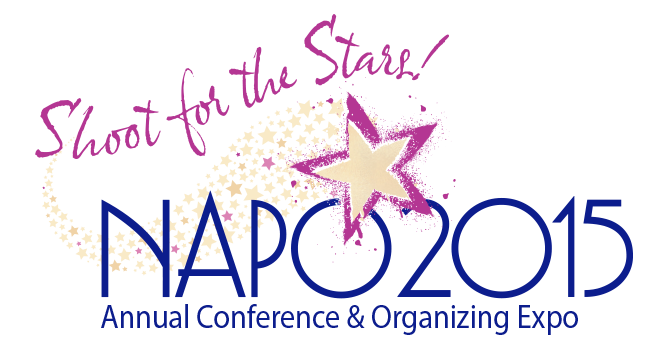

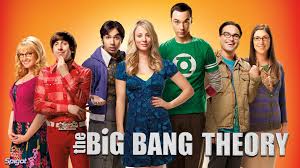
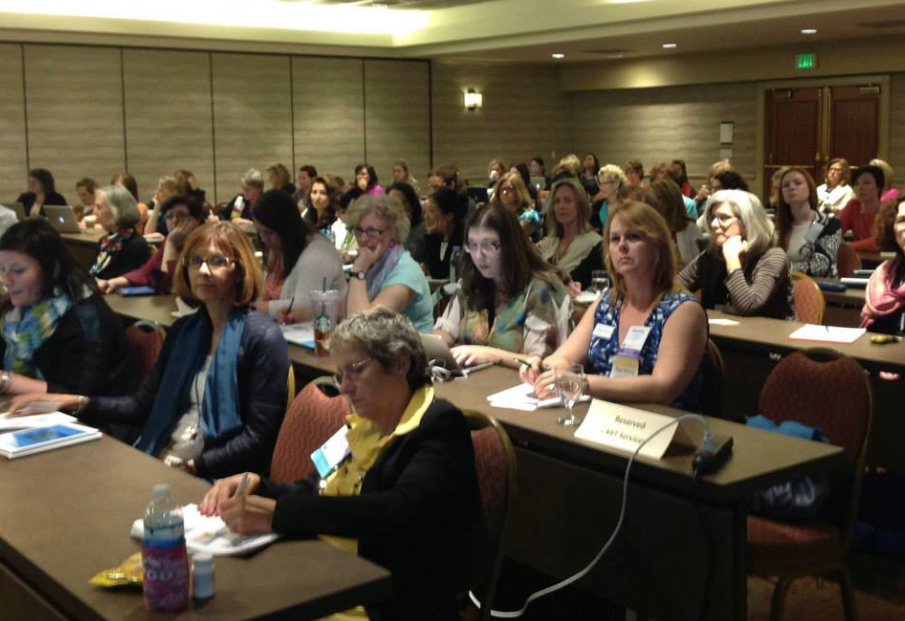
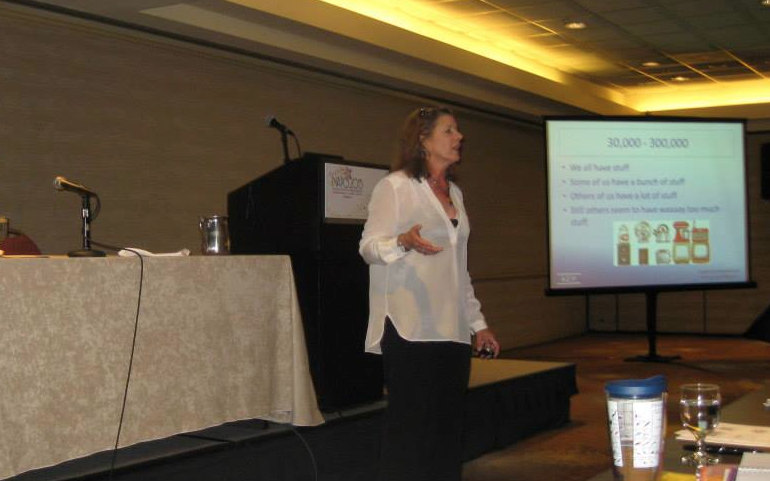



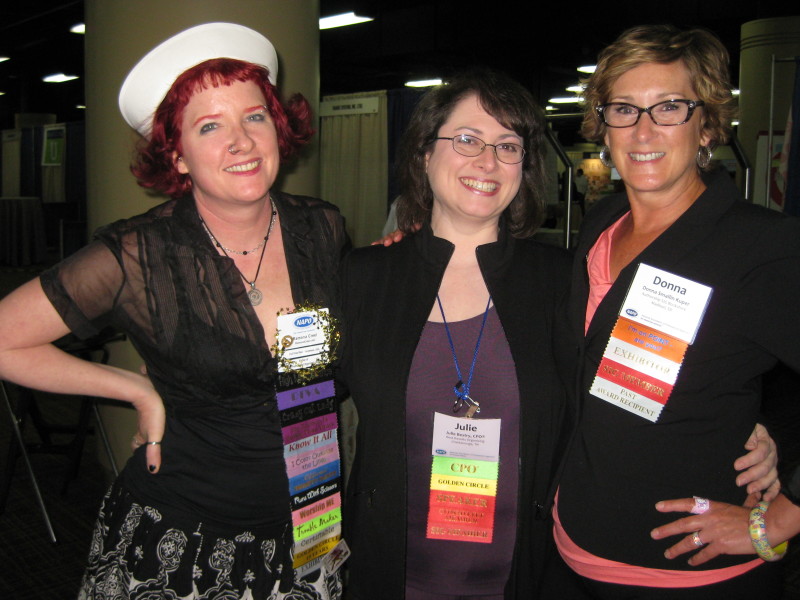
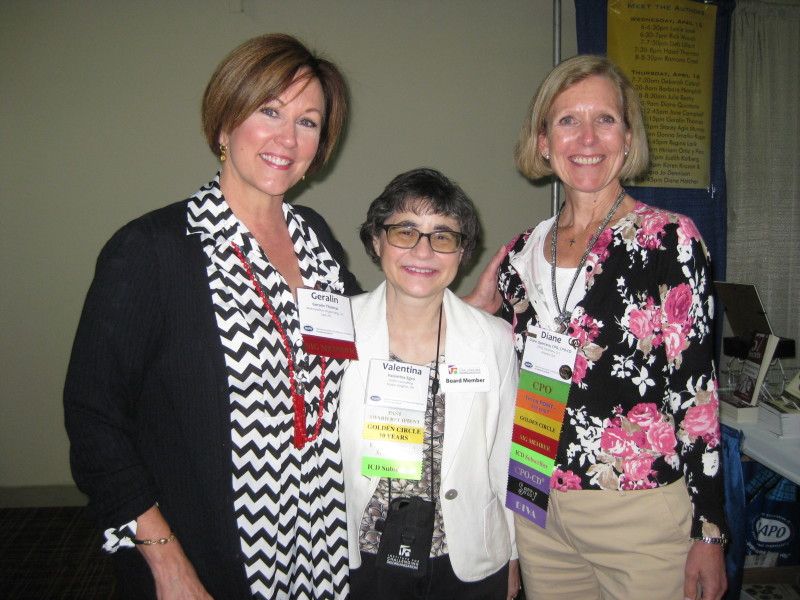
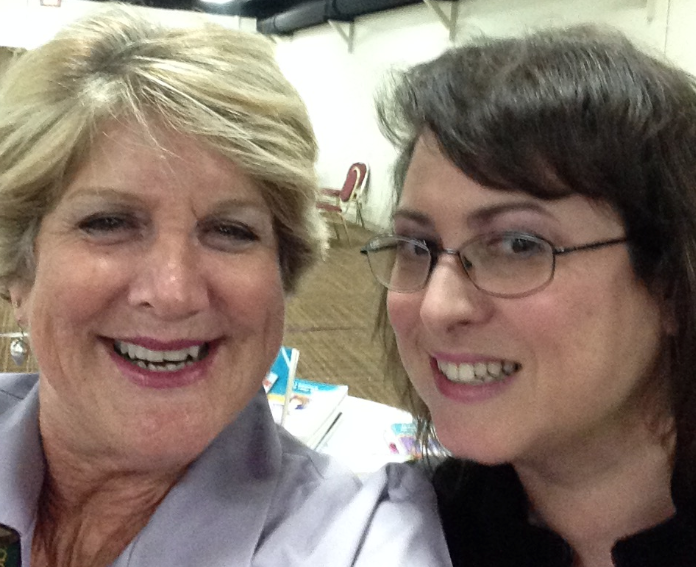
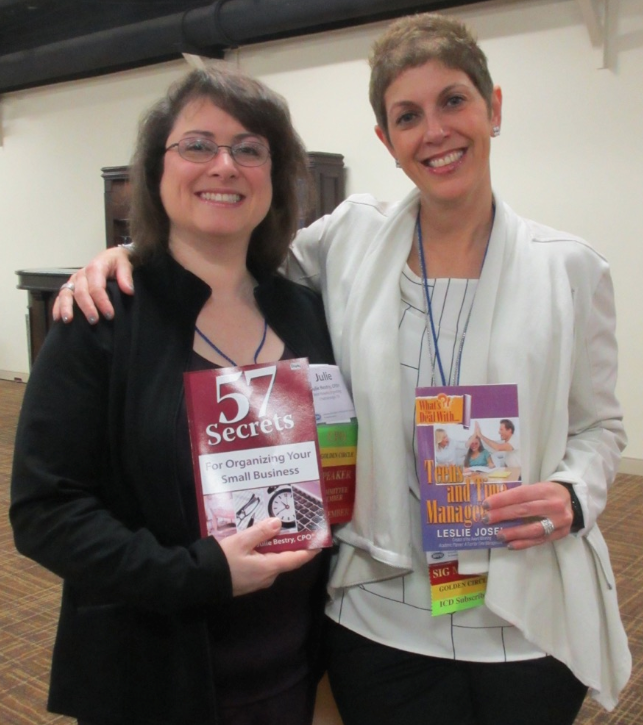
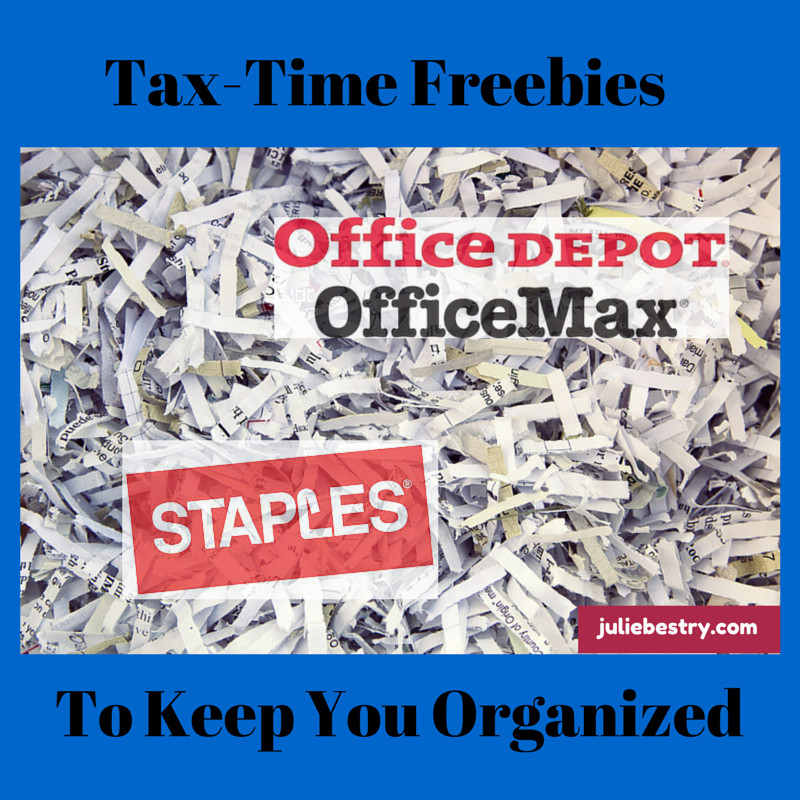
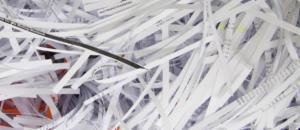
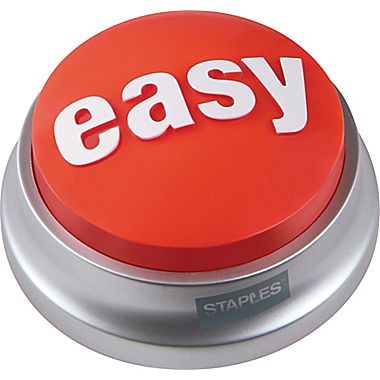
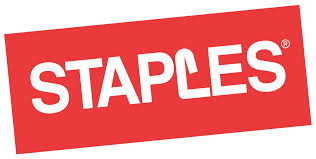


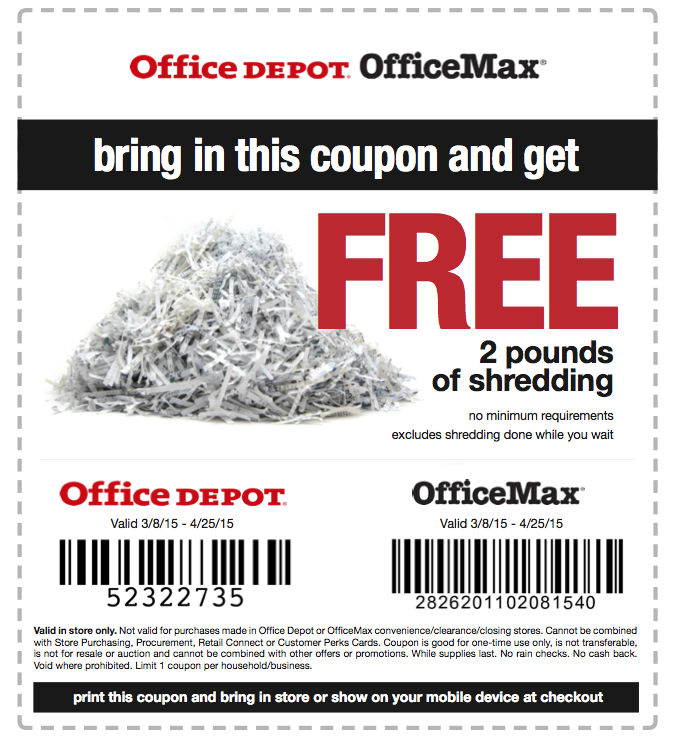


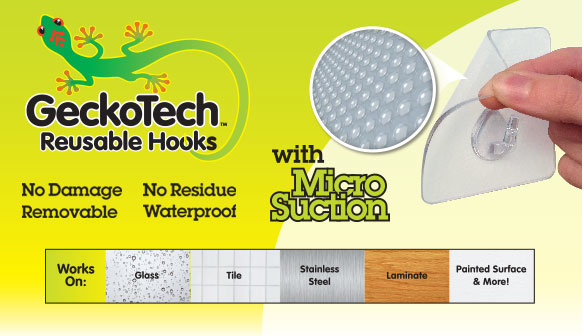
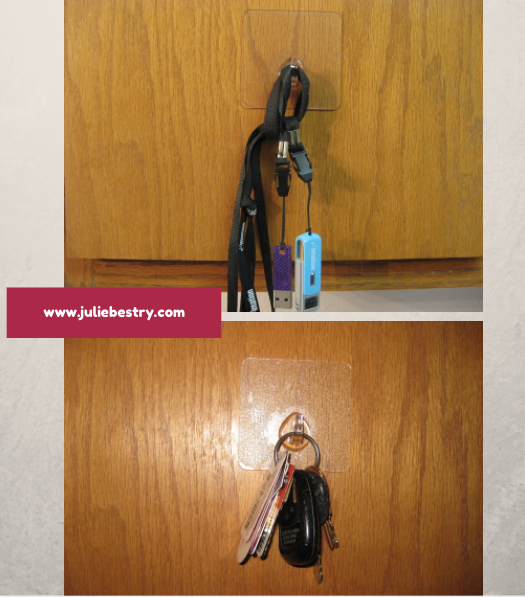
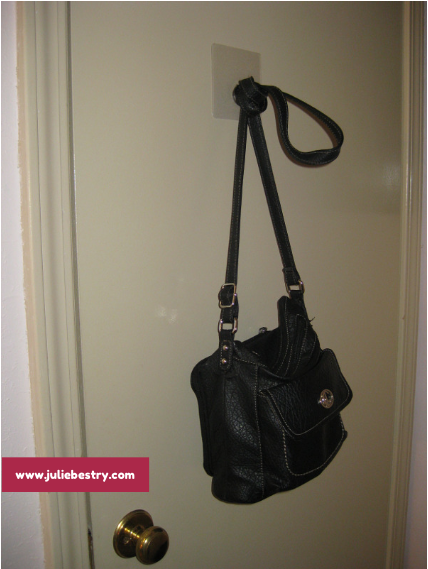
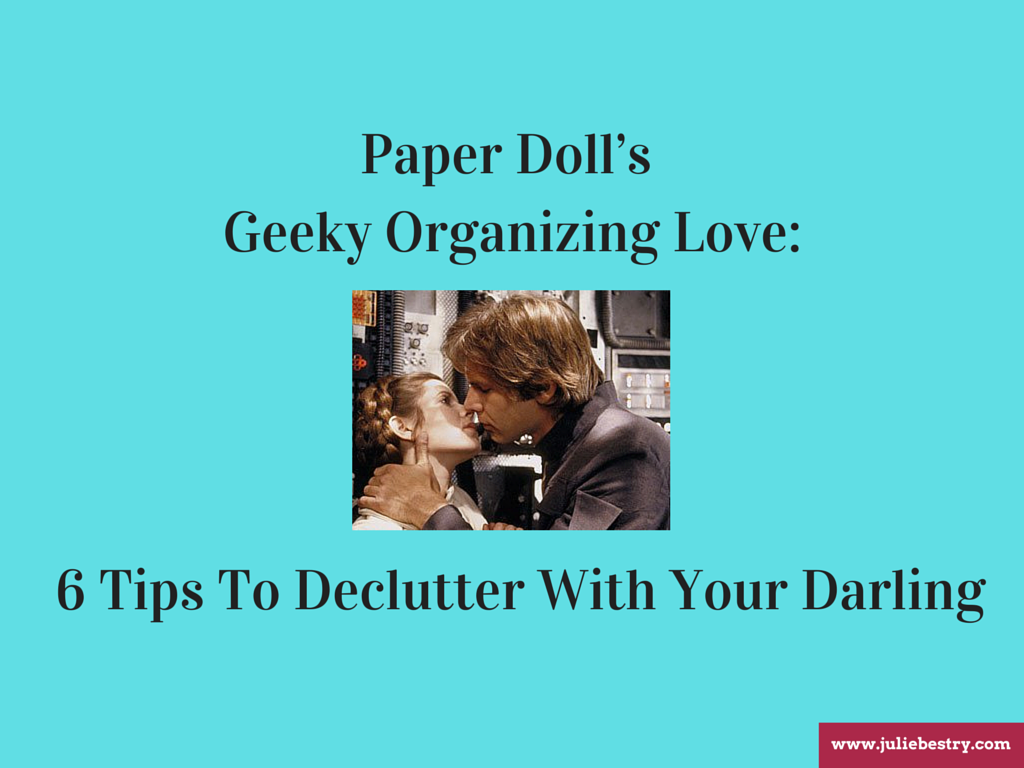

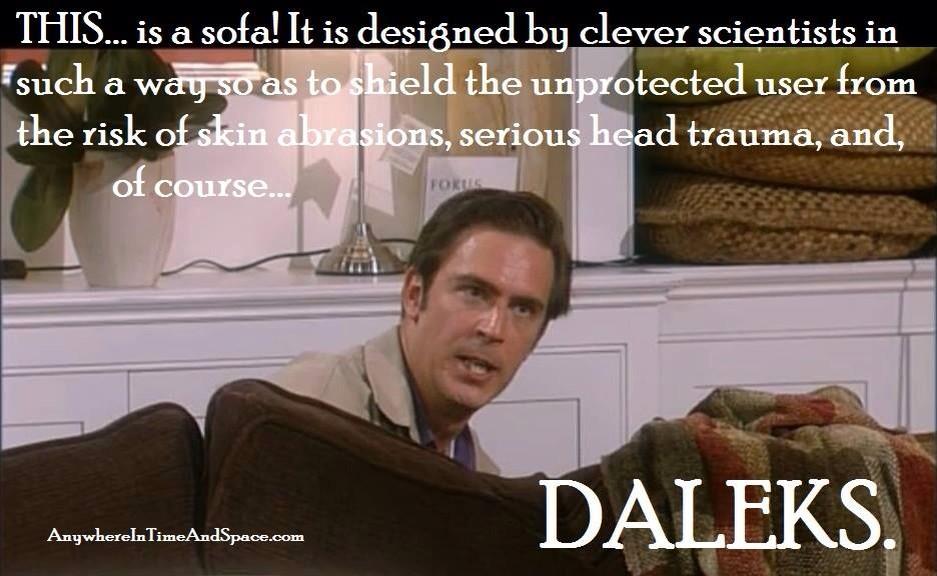



Follow Me